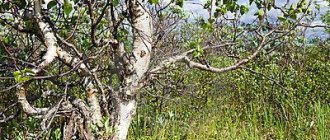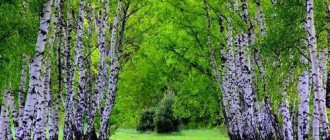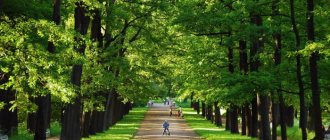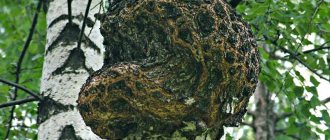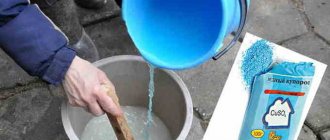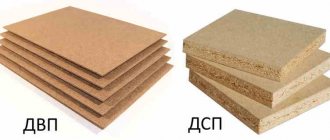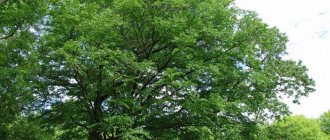Burl on the tree
A burl is a growth on a tree with an abnormal wood structure, formed by the local growth of many densely seated accessory dormant buds. Sometimes a few of these hundreds and thousands of undeveloped buds germinate and sprout.
Burl on a tree - ash
The ancient Slavic word “kap” means “head”: usually the growth actually has a rounded shape. Other Old Russian names: bolona, howl, vyplavok, swim, float, howl, paport, roll, goiter, svil, brush. In some sources, burls are also called “witch’s broom” or “whirlwind’s nest,” which is not entirely correct, since these names denote a completely different tree pathology.
Burl forms on all deciduous (mostly) and coniferous trees. In Russian latitudes it can be found on birch, poplar, maple, linden, aspen, oak, ash, elm, and walnut. The dimensions of the burl vary from several centimeters to several meters in cross-section. It takes decades, or even more than half a century, to form a medium-sized growth. Cap is a fairly rare occurrence, and finding at least one specimen in the forest is a great success. However, there are trees with several or even many growths. As well as places with a concentration of burl trees.
Burls on a tree - birch
Typically, trays are divided into stem and root. A trunk burl forms on thick branches or a trunk and can be lateral (develop on one side, most often the south) or circular (grasp a branch or trunk in a ring). A basal growth - caporoot - is formed on the root collar or roots of a tree. In the first case it is above the ground, in the second it is completely hidden and can be detected in the spring by young shoots near the main trunk of the tree, which quickly die. A tree can have different types of burls at the same time.
Caporoot
If you remove the bark from the burl, then under it an uneven, textured surface will be revealed, completely covered with needle-shaped, jagged and pineal-shaped tubercles - these are undeveloped buds.
Burl without bark
Around each dormant bud there is already a rudimentary ring structure.
Dormant buds
LiveInternetLiveInternet
Cap, suvel.
Harvesting, drying, properties. The author of this material is a great specialist in the artistic processing of wood (and not only wood), already familiar to us from his carved Easter egg, Sergei from the Moscow region.
Today Sergey will reveal to readers the secret of quick drying of such rare and interesting materials as burl and suvel. The information is very rare and useful. Reading... So first, let's define some concepts. KAP - (aka witch's broom) is a benign formation on a tree, which is a bunch of thin branches growing from a teardrop-shaped (most often) growth. When viewed cross-section, it has a texture with pronounced knot cores. It is difficult to process due to its highly curled texture and a huge number of knots. Extremely beautiful, durable, perfectly sanded and polished. Numerous individual areas have a pearlescent tint. It has no great industrial significance, but is highly valued because of its beauty. If it is used in industry, it is only in the form of veneer for finishing furniture (burls from exotic tree species are mainly used), as well as the production of small products such as boxes, cigarette cases, women's hairpins, and small jewelry (birch burls). Used on knife handles is considered good taste and is also valued by wood carvers for its unique texture. It is impossible to find two identical pieces of burl; even the halves of a sawn burl have different patterns, the build-up is so heterogeneous. It grows on many trees (linden, alder, birch, maple, oak, etc.), but the most valuable and beautiful is birch (of those growing in our latitudes). The growth is usually small, maximum the size of a volleyball ball or the size of a large plate. There is no point in cutting any pattern on the burl, since the texture clogs everything up. The photo shows a birch burl. Unfortunately, I couldn’t get a cut of a birch burl (I took these pictures near my native police station and, as you understand, they wouldn’t let me cut anything down there... But I contrived and found an ash burl; most of the burls are similar in texture and differ only in color and the size of the knots' cores.
SUVEL - (aka svil) As is clear from the name, the growth got its name because of its structure (twisted structure, that’s putting it mildly). Suvel is a drop-shaped or spherical growth on a tree (there is also a ring variety that covers the tree trunk around the perimeter), usually grows 2-3 times faster than the tree itself. When cut, it has a texture similar in pattern to marble and mother-of-pearl (this is the main sign of difference from KAPA; in the future, do not confuse suvel and burl). The presence of mother-of-pearl stains on polished wood creates a beautiful shimmering picture that glows from within. Svil is also poorly processed, like burl, but not as hard. The size varies from a nut to 1.5 meters in height (I myself saw one on a birch) and up to 2 meters in diameter (a ring suvel that completely covered the tree trunk). In the Vatican there is a font much more than a meter in diameter, carved from a single piece of suveli. I myself was once sitting in a chair carved from suveli. It holds fine threads perfectly, but cutting suvel is not recommended. It is better to sand and varnish (impregnate with oil). The product will only benefit from this. The most valuable is the root or butt fork. The presence of dark veins and clearly defined twisted annual rings. This is a fairytale. BEAUTIFUL, that says it all. Barrel suvel has a finer texture and a more subtle “frosty” pattern. And lighter wood. In terms of strength, butt suvel is slightly superior to trunk suvel due to the structure of the tree trunk. Suvel is durable, beautiful, easy to polish and grind. Well-dried and treated, it begins to 'glow' from the inside (with proper impregnation with oils, the wood becomes like amber and even a little transparent). Usually has a color from soft yellow to pinkish-brown to completely ocher-brown. It all depends on the conditions and drying time. The cap has the same colors. Photos: As you can see, the cap doesn’t look like suvel at all. CHAGA is a mushroom (not to be confused with the tinder fungus!!!) and we do not need it for our purposes.
So, how to dry it. I’ll say right away that the “steaming” method is suitable for small pieces of wood. About half the size of a football or a small log. 1. We cut off the growth. We do this with a sharp saw. Otherwise, you will get tired of sawing, and the tree will begin to become shaggy. We do not peel off the bark. Don't forget to cover the cut on the wood with oil paint or wax or something similar. IT IS PREFERABLE TO CUTT OUT THE GROWTH DURING THE DRY TIME OF THE YEAR, IDEAL AT THE END OF AUGUST, THE BEGINNING OF SEPTEMBER, BEFORE THE COMMONATION STARTS. 2. Take an unnecessary pan (bucket) and throw a piece of wood there. The pan is unnecessary, since during the cooking process a very tricky broth is formed which is then very troublesome to wash off. It is better to clean the wood of any rags of birch bark and other fragile and dangling pieces. they will still fall off. I consider birch growth as the most accessible and beautiful; the rest of the growths are cooked using the same technology. The log is accordingly cleaned of any debris and fragile particles. Pour water. It is convenient to do this with a faceted glass (it contains 250 ml). The water should cover the piece of wood by about a centimeter or two. The tree naturally floats up, but let’s press it to the bottom and we’ll see everything. It doesn’t matter what kind of water you pour, cold or hot, it will still boil. You can throw a piece of wood into a saucepan as much as you like; what is important is the volume of an individual piece of wood and not the total volume of wood. 3. Take table salt, whatever you don’t mind. We're not making soup. For a liter of water, pour 2 large tablespoons of salt (who will count glasses of water??? Eh?). You can do more, as much as you like, it’s okay, it’s impossible to overdo it. The main thing is that the water is sickly salty. You can use clean sea water (precisely clean, otherwise it will smell disgusting of mud). The salt will draw sap from the tree, but will not saturate the tree. 4. Find sawdust of resinous wood. Spruce and pine are the easiest to get. Take a saw and go ahead. We need two powerful handfuls of sawdust (raking the sawdust with both hands). Precisely sawdust, not shavings from a simple hand plane. The shavings will come from an electric planer (you can get them at the nearest sawmill or plan them yourself). I always use them. They are quite small and are usually plentiful and easy to obtain. The more resin in the sawdust, the better. And the finer the sawdust, the better. Pour into a saucepan. You could have taken a bigger saucepan! Sawdust will give the suveli a pleasant ocher color. From soft pink-yellow to ocher-brown. Resins will also add strength to the wood and reveal texture. 5. When the water boils, reduce the heat and leave it simmering for 6-8 hours, longer if you have the patience. If the saucepan is large, then you don’t have to turn down the flame, let the water boil and bubble. But you need to watch so that the water does not boil away completely. Salt, sawdust, temperature and time will do their job. Add water as needed. During the cooking process, a red 'broth' is formed. And scale. It is better to remove scale immediately. It is very difficult to wash off. 6. 6-8 hours have passed (depending on the size of the piece of wood). We take out the piece of wood. We rinse under running water to remove sawdust. We dump the water from the pan as unnecessary, but you can leave it for next time if you have somewhere to store it. But it's easier to pour out the water. We throw the growth onto the cabinet, wrapping it in nothing. Let it cool for a day or two. 7 We repeat the cooking and drying process 2-4 times depending on the volume of the wood. To speed up the process, you can use a pressure cooker. The time is reduced to 4-6 hours. 8. During the last cooking, you need to quickly peel off the bark while the tree is hot. Although she herself should fall off by this time. Carefully!!! Hot!!! use gloves! 9. We throw it on the closet for a week or two. The tree is basically already dry, but let the remaining moisture go away. The tree will 'get used' to the atmosphere. After final drying, the wood will become bone-like and can be cut, sawed, or sanded. There will be no foreign smell. It will only smell like wood. 10. In the process of accelerated drying of wood, it must be remembered that small cracks may appear, and therefore it is necessary to allow allowance for their removal in subsequent processing. 11. Where to look for growths... Naturally in the forest. BUT! There are no specific places of growth, they grow spontaneously, and the biggest and most beautiful growths will be found by the most big-eyed and persistent. This activity is akin to mushroom hunting; whoever ran around the forest further and further got more. Look like that's it. I remind you once again that large pieces cannot be dried like this. Cracked. Necessarily. Verified. 12. After the wood has finally gotten used to the atmosphere, you can start working with the workpiece. It is advisable to soak the suvel and cap with oil, and if desired, with wax too. The wood will reveal its texture, it will “play,” as they say, and all its inner beauty will appear. If you have any questions or any clarifications about the technology described above, I will answer to the best of my ability. I’ll end with this, your Serjant.
[\MORE]
Why does a cap appear?
Researchers have not reached a consensus regarding the reasons for the formation of growths.
The most natural explanation is that the emerging adventitious bud cannot grow through the thick and hard bark and freezes. However, the growth processes that have begun are accompanied by an influx of nutrients to this place and the production of plant hormones, so new buds begin to form nearby, which also become dormant, and so on. Opponents insist that this cannot be done without the influence of external factors of a natural or anthropogenic nature. In particular, mechanical damage to the cortex (animals, birds, people, extreme elements, etc.) at the site of a dormant bud. This assumption is confirmed by the fact that on walnut plantations, where vegetative propagation by grafting (which is actually an injury) is actively used, the root cap often develops on the rootstock below the grafting site. When the fruiting period of the nut expires, the tree is dug up along with the burl, which by that time has grown to a respectable size, and sold as a secondary product.
According to other versions, the formation of burls can be caused by fungi, bacteria, viruses, insects, weather anomalies (such as sudden spring frosts), changes in ecology and background radiation, special mineral composition of the soil, geological faults, and groundwater.
According to the conclusions of Soviet scientists, the formation of burl is a biologically useful, protective property for trees, acquired during the process of evolution in response to unfavorable environmental conditions. Moreover, this is a genetically fixed (hereditary) quality. In the Moscow region and Kirov region, successful attempts were made to cultivate trees with growths using planting material from burl birches (seeds and cuttings for scion). It was noted that such trees are more viable and hardy.
Burl texture
The heterogeneous structure of the burl gives a unique, highly decorative pattern in a tangential section: dark dots are the cores of dormant buds, tortuous areas are elongated and twisted annual layers. In a radial section, light and dark rays are distinguishable. The wide palette of burl colors includes various shades of milky, brown, green, and pink. The color depends on the type of tree, its growing conditions, and the location of the thickening. The texture of the stem growth is richer than that of the burl, and the burl of valuable and exotic tree species is more expressive compared to ordinary ones. On a fresh cut, the texture is weakly expressed; to reveal it, the grain is subjected to grinding, toning and polishing. As a result, a picturesque pattern and multicolor appear, a muted shine and shimmer in the light appear. The burl pattern is often compared to malachite and marble. The comparison with stone is also apt because the growth is characterized by increased density and hardness and is heavier than the parent wood.
Birch burl texture
Burl is used in its entirety to create artistic products, and in veneer for finishing exclusive items and furniture. Burls of thuja, myrtle, camphor and some other trees retain their characteristic aroma even after processing.
Full or partial copying of copyright information and photographs is unacceptable.
Meaning of the word cap
Examples of the use of the word cap in literature.
For callousness,” Alexey narrowed his eyes and spoke in a threateningly mysterious manner, “you will have caps, specialists, and estimates.”
Kapa was carrying a white mug with a bright berry, Liika, bending at the thin waist, was holding a red-haired, fidgety girl, who sullenly clung to the nanny when she saw someone else's uncle.
After traveling around Europe, Kika settled in France, on Cap Ferrat, where the late Eurasianist somehow managed to Europeanize a small villa back in Soviet times.
Then I also remember that when I was walking to the entrance, I was caught by a wave, and I stood on one leg, grabbed the door frame and poured water out of my boot.
He plucked light gray moss and reindeer moss from sandy areas, collected various lichens, birch tinder fungi, agaric mushrooms growing on rotten wood, fancy burls and other gifts of nature.
The strong ties that connected Cap with his father prompted both to engage in lengthy courtship and cajoling, and Tubdu finally gave in - with her good nature it was difficult to resist the desires of three people at once, plus her own attraction to Isako.
In the room there are monks, sisters Angela and Anna, who arrived from Asmara, brothers, sister, Monsignor Kapov and Monsignor Dell'Acqua, Cardinal Cicognani.
A platform was built from logs above the engine hood; we manually dragged powerful pumps onto it.
Mom took out the woolen threads that she bought when she learned to knit and handed them to Capa.
In the spacious planked chamber of the lord's courtyard, bordered by fringed benches, with small mica windows in patterned lead frames, decorated with inserts of blue and red glass, where painted chests with letters and treasury of the house of St. Sophia stand and huge, three-quarters tall, sternly look out from the walls, icons of Novgorod, ancient and Byzantine writing, at an immense oak table, covered with a red, with gold brocade flowers, silk patterned tablecloth and furnished with precious vessels made of silver, gold, painted burl, Venice crystal and glazed oriental glaze with various kvass, light honey and red drinking Fryazhian wine, sit the boyars, gathered from all over the great city.
The music boomed so loudly that Capa cowered in fear and closed her eyes.
When the gray skein ran out, Capa took the red one and tied the thread to a broom, then to a bucket of water.
In the place where Capa was sitting, there was a chair on the floor, sawn in half.
Pavel extended his hands up, but Capa, not paying attention to him, stepped onto the wire.
Olya took a blanket, spread it on the sofa, and laid Kapa on the blanket, like a small child who still cannot walk.
Source: Maxim Moshkov library
